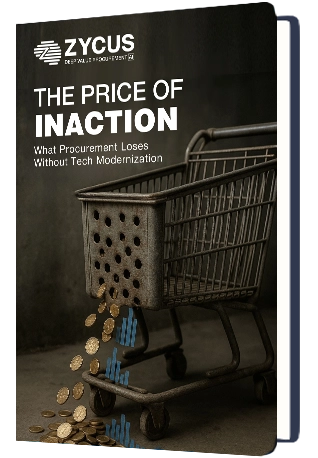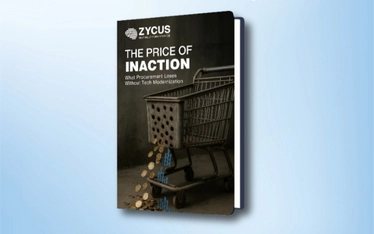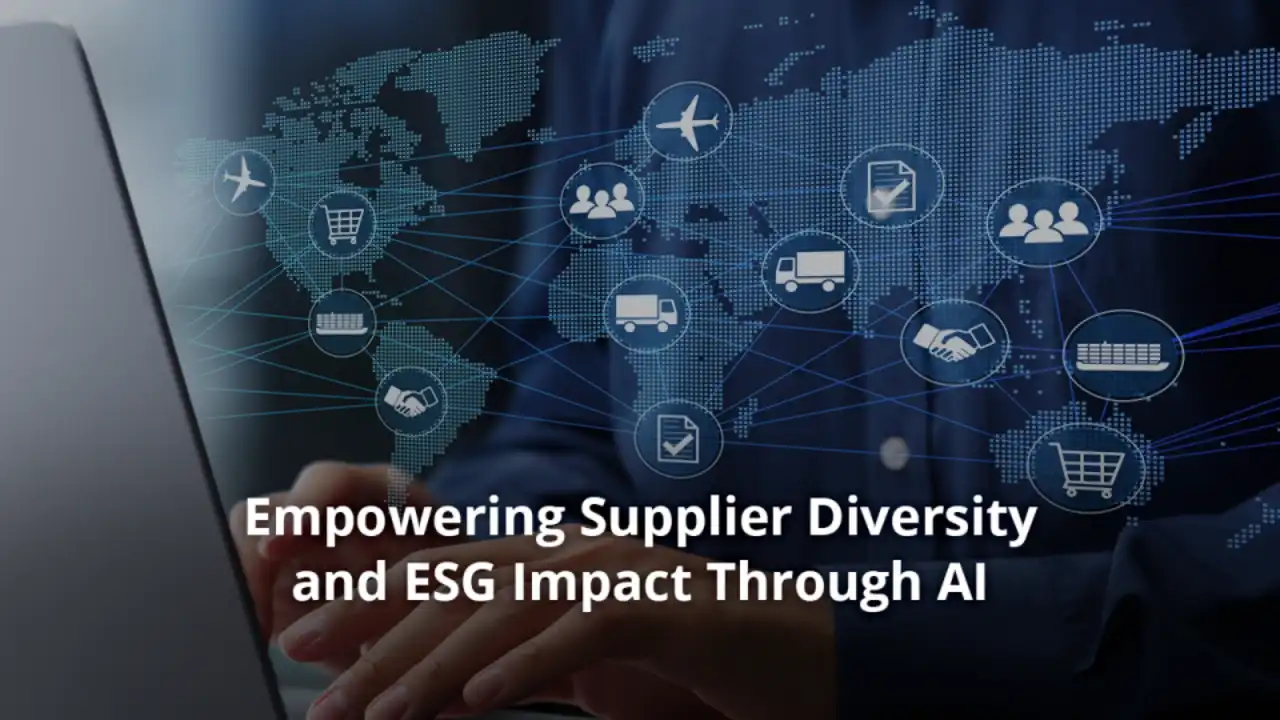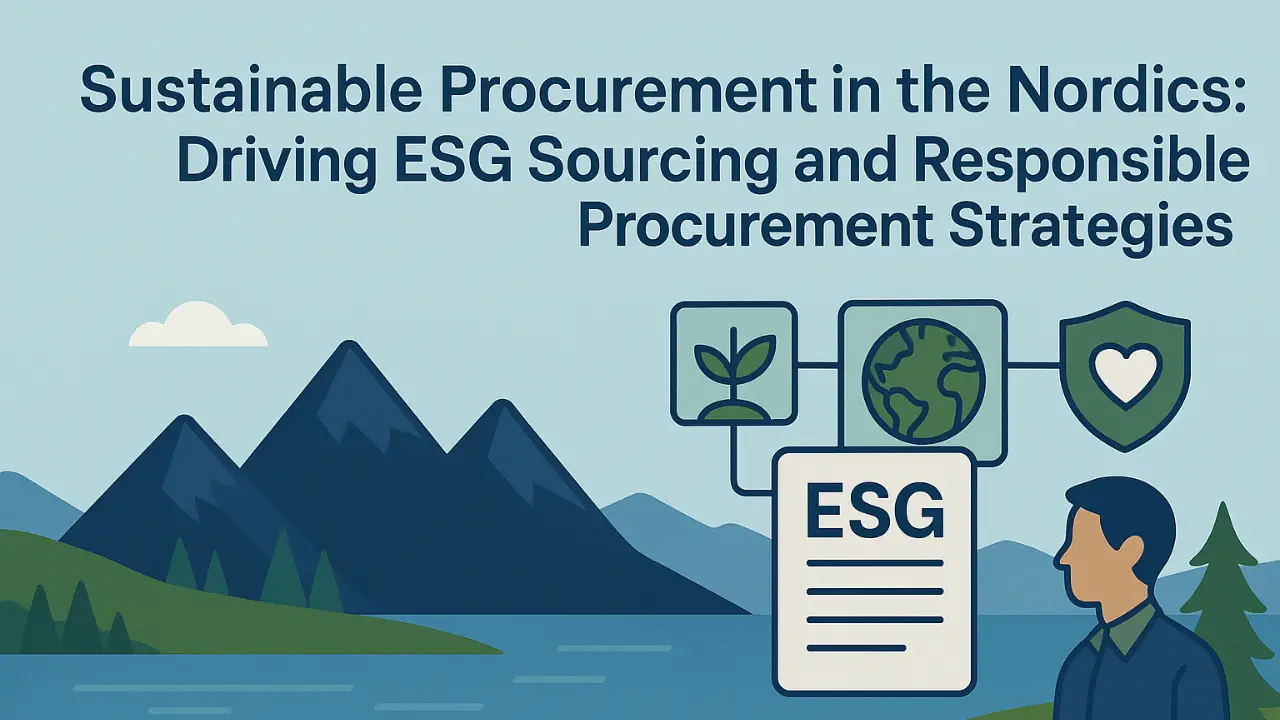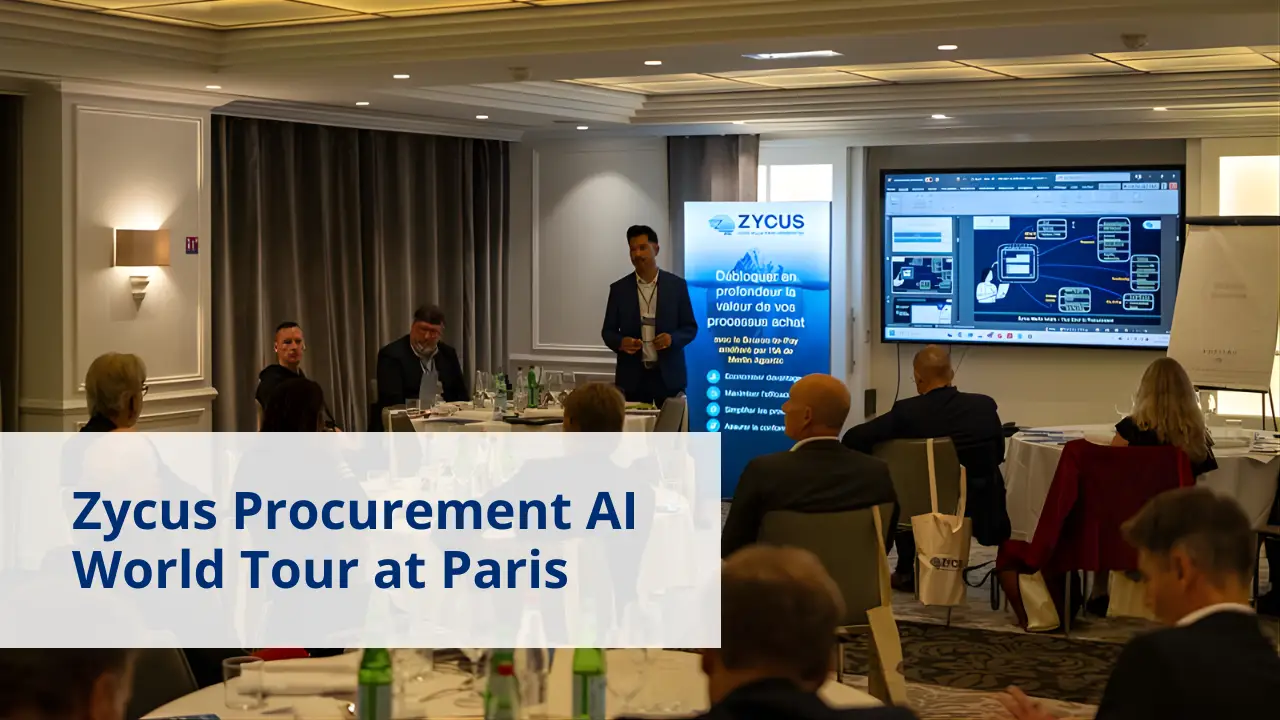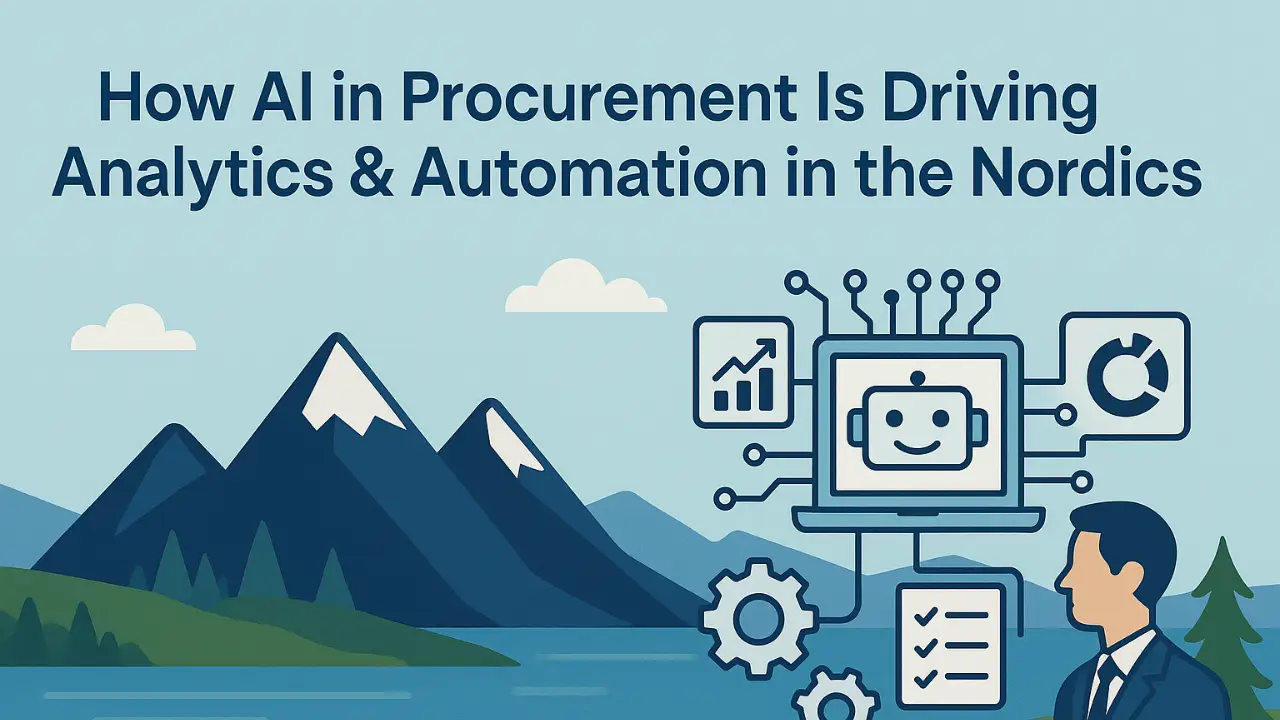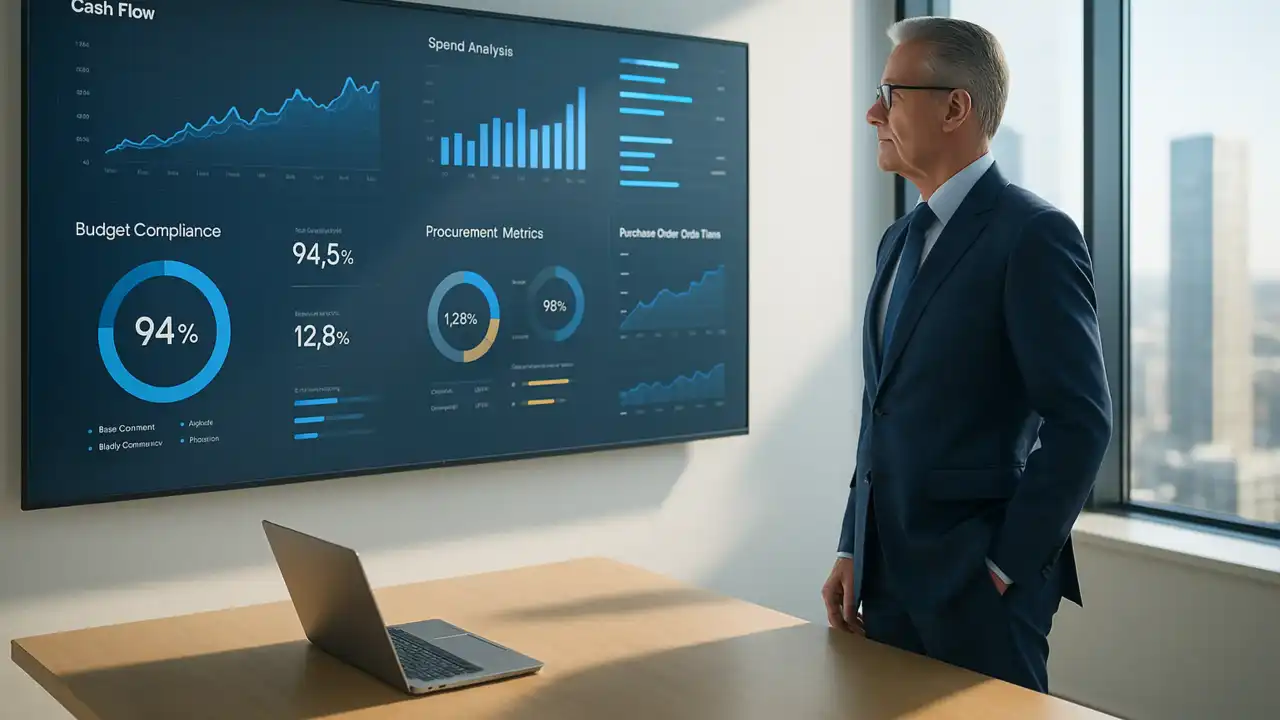By 2026, procurement has entered a new era where artificial intelligence is a core strategic partner, not a side experiment. Yet, many organizations still manage multi-million-dollar supplier relationships through spreadsheets and instinct. Picture a procurement team spending weeks dissecting supplier data—only to miss a disruption that AI could identify in minutes. The modern reality is clear: success now depends on combining human expertise with AI-driven intelligence. Forward-thinking procurement leaders are leveraging Generative AI (GenAI) to predict risks, automate supplier diversification, enhance negotiations, and convert supplier data into actionable insights that power faster, smarter decisions.
This isn’t about replacing your procurement team’s expertise – it’s about giving them superpowers. Let’s explore a few ways AI is revolutionizing supplier strategy in the real world.
But here’s the reality check – the most successful companies aren’t just throwing AI at their supplier problems; they’re fundamentally rethinking how humans and machines can work together to build smarter, more resilient supplier networks. Gone are the days when “AI implementation” meant automating a few reports.
Today’s procurement leaders are using AI as their strategic co-pilot, helping them spot risks before they become crises, negotiate better deals without sacrificing relationships, and turn supplier data into actual business intelligence.
TL;DR
- AI becomes a strategic co-pilot — helping procurement teams predict risks, improve negotiations, and build smarter, data-driven supplier networks.
- Negotiation assistants powered by GenAI deliver 20–25% better pricing outcomes using behavioral and market analytics.
- Autonomous supplier diversification identifies alternative vendors months in advance, ensuring supply chain resilience.
- AI-driven collaboration hubs and digital twins boost supplier innovation, with some enterprises seeing 50% higher co-creation rates.
- Next-gen compliance monitoring and regulatory intelligence reduce global sourcing violations by over 40%.
- AI-powered forecasting models achieve 90%+ accuracy, aligning supply and demand while cutting waste and disruptions.
How is AI Impacting Supplier Strategy?
The following five strategies aren’t just theoretical possibilities – they’re being implemented right now by forward-thinking companies that understand the power of combining human expertise with AI capabilities. Each approach addresses a critical challenge in modern supplier management, from negotiation complexities to compliance headaches. Let’s dive into how these AI-powered strategies are actually working in the real world:
Managing Negotiations with Suppliers Using AI
Remember those late-night email chains with suppliers, trying to find that sweet spot-on pricing? AI is flipping this script entirely. Today’s AI negotiation assistants aren’t just crunching numbers – they’re analyzing years of negotiation patterns, supplier behaviors, and market dynamics in real-time. Imagine your team receiving instant insights during live negotiations, showing that a supplier typically offers a 12% discount when you commit to an 18-month contract instead of the standard 12 months. Companies like Unilever and P&G are already using AI to spot these patterns, resulting in 15-20% better deal terms while actually improving supplier relationships.
Read more: Mastering Negotiation in the Age of GenAI: A Playbook for Sourcing Success
Autonomous Supplier Diversification Using AI
Let’s be honest – most companies learned the hard way during COVID that having all their eggs in one supplier basket is a recipe for disaster. But here’s the game-changer: AI systems are now acting like your supply chain’s personal matchmaker. They’re continuously scanning the market, evaluating potential suppliers against hundreds of parameters, and flagging opportunities before your competitors even notice them. A fascinating example? A major automotive manufacturer recently used AI to identify and onboard three alternative chip suppliers six months before their primary supplier faced production issues. The result? While competitors halted production, they kept their assembly lines running.
Download Research Report: Taking a 360° Approach to Supplier Management
Supplier Collaboration Using AI
Gone are the days of quarterly supplier review meetings where everyone shares outdated PowerPoint slides. Modern AI platforms are creating digital twins of entire supplier networks, enabling real-time collaboration that feels more like a synchronized dance than a mechanical transaction. Take Schneider Electric’s approach – they’ve implemented AI-powered collaborative platforms that automatically alert both parties about potential issues, suggest joint innovation opportunities, and even facilitate automated problem-solving sessions. The kicker? Their supplier innovation submissions increased by 47% within six months of implementation.
Global Sourcing Compliance Using AI
If you’ve ever lost sleep over changing international regulations or compliance requirements, this one’s for you. AI is transforming compliance from a reactive scramble to a proactive strategy. Modern AI systems are like having a team of legal experts working 24/7, monitoring regulatory changes across different jurisdictions and automatically flagging potential issues. A major pharmaceutical company recently avoided $3.5 million in potential fines when their AI system detected subtle changes in EU manufacturing regulations that would have affected their Asian supplier base – three months before the changes were widely publicized.
Download Whitepaper: Supplier Risk And Performance Management: Best Practices For KPI Creation
Demand Forecasting Using AI
Let’s face it – traditional demand forecasting often feels like trying to predict weather with a crystal ball. But AI is changing this game dramatically. By analyzing everything from social media trends to weather patterns, AI forecasting models are achieving accuracy rates that seemed impossible just a few years ago. A retail giant recently reduced their forecast error rate from 32% to 11% by incorporating AI that analyzed over 1,000 variables per product line. The real magic? Their suppliers now have access to these forecasts in real-time, allowing them to adjust production schedules proactively rather than reactively.
The beauty of these AI applications isn’t just in their technological sophistication – it’s in how they’re making procurement teams’ lives easier while delivering tangible business results. Companies implementing these AI strategies are seeing an average of 23% reduction in supplier-related disruptions, 18% improvement in negotiated terms, and a 15% increase in supplier collaboration effectiveness.
Conclusion
The future of supplier management isn’t about AI taking over procurement decisions. It’s about procurement teams leveraging AI to spend less time wrestling with spreadsheets and more time building strategic supplier relationships. It’s about using technology to spot opportunities and risks faster, negotiate better, and collaborate more effectively.
Remember, your competitors are likely already exploring these AI capabilities. The real competitive advantage won’t come from having AI – it’ll come from how skillfully you blend AI’s analytical power with your team’s experience and relationship-building expertise. The future of supplier strategy is human-led, AI-enhanced, and it’s happening now.
FAQs
Q1. How is AI transforming supplier strategy in 2026?
In 2026, AI is redefining supplier strategy by integrating predictive analytics, real-time risk assessment, and autonomous supplier discovery. Procurement leaders now use AI to anticipate disruptions, negotiate smarter contracts, and co-innovate with suppliers. The focus has shifted from reactive sourcing to proactive, data-driven supplier ecosystems powered by GenAI and machine learning.
Q2. How does AI improve supplier negotiations in 2026?
AI negotiation assistants in 2026 use natural language processing (NLP) and predictive behavior models to recommend optimal deal terms in real-time. Procurement teams can simulate multiple negotiation outcomes and understand supplier behavior patterns before entering discussions. This leads to 20–25% better pricing terms while maintaining long-term supplier trust.
Q3. What is autonomous supplier diversification and why is it crucial in 2026?
Autonomous supplier diversification uses AI to continuously monitor market conditions, evaluate supplier reliability, and identify new vendors before disruptions occur. In 2026, as global supply chains remain volatile, this approach ensures business continuity and competitive agility—allowing enterprises to predict supplier risks months in advance and act preemptively.
Q4. How is AI enhancing supplier collaboration and innovation?
By 2026, AI-powered collaboration hubs connect procurement teams and suppliers in real time through digital twins and shared data ecosystems. These systems automatically detect potential issues, suggest joint R&D opportunities, and even predict innovation success rates. Organizations report up to a 50% increase in co-developed supplier solutions since integrating AI collaboration tools.
Q5. How is AI helping companies stay compliant with global sourcing regulations in 2026?
In 2026, AI compliance systems continuously track evolving ESG laws, trade restrictions, and sustainability standards worldwide. They use regulatory intelligence models to alert procurement teams before non-compliance risks arise. This has helped enterprises cut compliance violations by over 40%, protecting reputation and avoiding costly penalties.
Q6. What role does AI play in next-generation demand forecasting?
Next-generation AI forecasting models in 2026 combine real-time data streams—consumer behavior, geopolitical events, and environmental factors—to deliver near-perfect accuracy. Retail and manufacturing firms now report forecast accuracy rates above 90%, enabling suppliers to optimize production, minimize waste, and align supply with true market demand.
Q7. What measurable outcomes can procurement teams expect from AI adoption in 2026?
Organizations using AI in supplier management report:
- 25% reduction in supply disruptions
- 20% improvement in negotiation outcomes
- 30% increase in supplier collaboration effectiveness
- Up to 10% improvement in ESG compliance metrics
These figures reflect AI’s evolution from an automation tool to a strategic decision partner in 2026.
Q8. Will AI replace procurement professionals by 2026?
No. By 2026, AI is seen as an augmentation layer, not a replacement. It automates repetitive tasks and provides data-backed insights, but strategic decision-making, relationship management, and innovation remain human-led. The future is AI-augmented procurement, where technology enhances human judgment and creativity.
Q9. How can organizations prepare for AI-powered supplier management in 2026?
Companies can prepare by:
- Upgrading data infrastructure for real-time analytics.
- Investing in AI governance and responsible deployment frameworks.
- Upskilling procurement teams to work with AI systems.
- Partnering with AI-driven procurement platforms to pilot automation in sourcing, negotiations, and compliance.
Q10. What is the future of AI in supplier strategy beyond 2026?
Beyond 2026, supplier management will evolve toward autonomous procurement ecosystems where AI systems predict demand, identify new suppliers, and execute low-risk transactions independently. Human experts will focus on strategic supplier alliances, sustainability, and innovation—making AI the backbone of a self-optimizing, globally resilient supply chain.
Related Read:
- Blog – Procurement Driven Competitiveness
- Blog – Procurement Analytics- Empowering the Future of Procurement
- Blog –Top 4 Business Drivers for Investment in Procurement Transformation 2023
- White Paper – Finance System Strategy as part of Post Modern ERP Strategy
- White Paper – The 11 Most Important KPIs to Unlock Sustained Procurement Performance in 2023
- AI-Driven Alternate Supplier Recommendations in Procurement: Best Practices
- Transforming Supplier Management with Generative AI: The Fortune 500 way
- The Zero-Friction Future: The Presence of AI in Supplier Relationship Management


















































